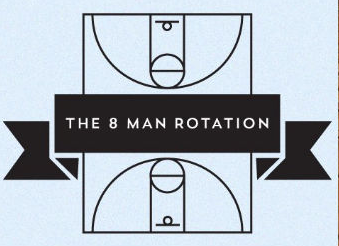Did you happen to catch Game 1 of the NBA Finals last week between the San Antonio Spurs and two-time defending NBA champions the Miami Heat? In the game, won by the Spurs 110-95, probably the most notable element was the Spurs arena air conditioning system failing in the second half. This led to soaring arena and on-court temperatures which (likely) contributed to Heat star LeBron James' serious leg cramps, a condition which forced him to leave the game in the 4th quarter, and factored significantly in the Spurs win.
While each athlete's ability to tolerate or withstand the increased temperatures is probably difficult to predict, the Spurs team seemingly had a slight advantage adapting to the tough conditions. Why? Possibly because of the team's diversity. The Spurs are the NBA's most diverse team in terms of the player's nationalities, featuring guys from places like France, Argentina, the US Virgin Islands, Australia, and Italy.
Many of these players have considerable playing experience in leagues and competitions in Europe, where in-arena air conditioning is much less common than it is in the USA. As such, these players were able to draw on that experience that the diversity of their backgrounds helped to provide, to successfully adapt to the unusual conditions in Game 1.
Here's a quote form Spurs guard and native of France, Tony Parker:
"I felt like I was playing in the European Championship. We never have AC in Europe so it didn't bother me at all."
The Spurs Manu Ginobili, an Argentine, had this to say about the heat (and the Heat):
"I don't think we (the Spurs) suffered as much. And for sure I played for more years in situations like this than with AC on the court. Not a big deal in that case."
As the Heat, and in particular James, were unable to adapt to the tough conditions, the Spurs were able to go on a late 31-9 scoring run and win the game by a comfortable 15 point margin. And in no small part, their diverse set of contributors were a key factor in the game's outcome.
It seems obvious that people from different backgrounds will have a different set of life experiences, sensibilities, and likely have ways to adapt and react to situations in a beneficial manner - all traits in evidence during Game 1 last week from the diverse players on the Spurs roster.
We all know, or have been trained to accept, that increased diversity is generally a good thing for workplaces and teams, but rarely do we get to see such a public and clear set of circumstances where having that diversity directly leads to increased organizational performance and better outcomes.
In this case, Game 1 of the NBA Finals, we saw loud and clear how having a more diverse team allowed the Spurs to succeed in conditions that really were not all that foreign (pardon the pun) to many of their players.
A good lesson and a fun game to watch as well. Unless you are a Heat fan.
Have a great week!

 Steve
Steve

